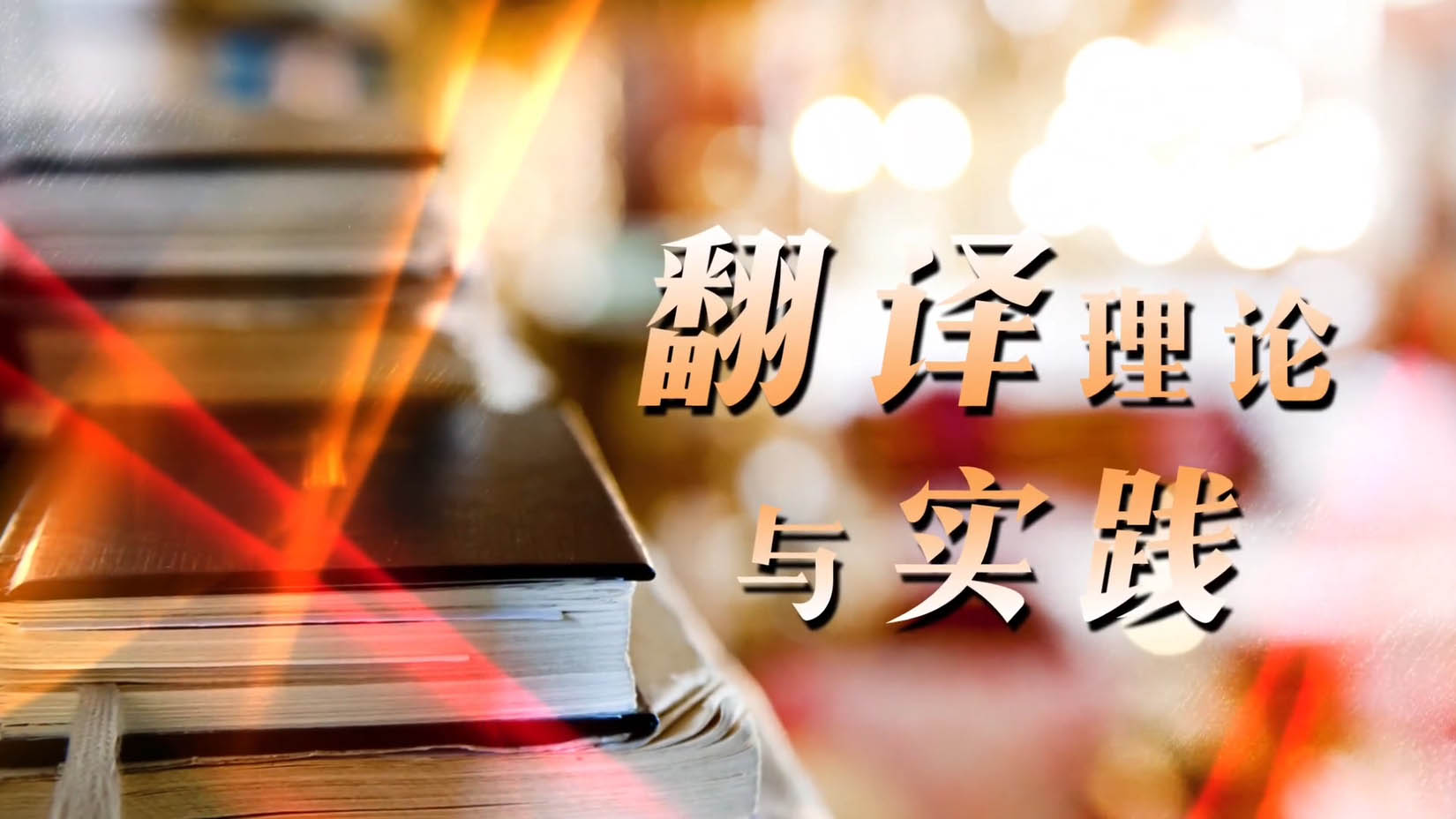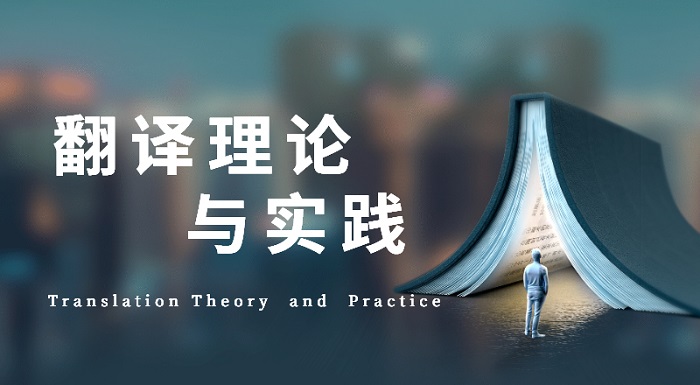- 英汉语句中的主要成分主语、谓语、宾语或表语的词序完全不一致。( )
- 英语习惯于用表示人或生物的词作主语,在思维方面往往以“人”为中心。( )
- 英语中即使是单个单词作定语放在被修饰的中心词之前,汉译时也必须调整词序。( )
- With “Omission” the translation technique deployed, which is the best Chinese version of the sentence “Any substance is made of atoms whether it is a solid, a liquid, or a gas”? ( )
- 许渊冲结合自己的文学翻译实践,提出了自成一派的翻译理论,其“三美论”不包括( )。
- With “Negation” the translation technique deployed, which is the best Chinese version of the sentence “No one should be immune from taxation”? ( )
- With “Omission” the translation technique deployed, which is the best Chinese version of the sentence “A difference arose between the neighbors over the height of the fence”? ( )
- 运用翻译技巧negation“正说反译、反说正译法”,可以使译文与现有的英、汉习语保持一致,可以使译文更符合原文的真实表达意图,可以使译文措辞更加委婉。( )
- “Take a rest when you are tired” 的地道译文是“如果你累了你就休息一下”。( )
- 汉语的无主句翻译成英语时都必须加上主语。( )
- “西风”和 “west wind” 在中西文化中是完全对等的概念。( )
- 下列哪一组原文的译文没有采用归化的翻译策略? ( )
- With “Negation” the translation technique deployed, which is the best Chinese version of the sentence “I missed the train so I was late”? ( )
- With “Change of Voices” the translation technique deployed, which is the best Chinese version of the sentence “Much has been said about the complication of the nuclear power station reactor”? ( )
- With “Repetition” the translation technique deployed, which is the best Chinese version of the sentence “He had experienced oxygen and/or engine trouble”? ( )
- 英语中用物主代词its, his, their等代替句中做主语的名词时,汉语译文中必须也使用代词。 ( )
- 有大量的双语公示语体现出典型的翻译技巧negation“正说反译、反说正译法”。( )
- 英语中数词与可数名词往往直接连用,它们之间没有量词,而汉语却往往要借助量词。( )
- “He is up in Mathematics” can be translated into“他提高了数学成绩”.( )
- “指称意义”是指词的确切和字面的意义,是人们进行语言交际时所表达的最基本的意义。( )
- Parataxis“意合”是指汉语强调逻辑上和意义上的连贯,而不在意词句之间形式上的衔接。( )
- 为了避免重复赘余,在翻译时可以删减一些可有可无的,悖离语言习惯的语言单位,因此必要时可以删减原文的部分观点。( )
- Which is the best Chinese version of the sentence “I’ve constantly challenged my own conclusion” ? ( )
- With “Change of Voices” the translation technique deployed, which is the best Chinese version of the sentence “Individualized tuition and assessment are carried on to help the students”? ( )
- 下列陈述,哪一项是不对的? ( )
- With “Change of Voices” the translation technique deployed, which is the best English version of the sentence“希望一切问题都会迎刃而解”? ( )
- With “Repetition” the translation technique deployed, which is the best Chinese version of the sentence “This has been our position, but not theirs”? ( )
- “五失本三不易”由东晋前秦时期的高僧彦琮提出,钱钟书曾评价“吾国翻译术开宗明义,首推此篇”。( )
- 张培基认为“翻译是用一种语言把另一种语言所表达的思维内容准确而完整地重新表达出来的语言活动。”( )
- 不同的社会文化赋予了词语不同的蕴涵意义,这些差异给翻译带来了困难和挑战,造成了文化负载词不可译的现象。( )
- 翻译本应力求简练,尽量省略一些可有可无的词,但有时为了表意明确、强调观点或表述生动,往往需要重复一些关键性的字词。( )
- 因为汉语句子容量通常没有英语句子长,所以汉译英实践中无法运用翻译技巧division“分译法”。( )
- In some cases, English passive voice may remain unchanged in Chinese version by applying certain Chinese passive signal words. ( )
- 英语重形合,所以其形合的手段多种多样,主要运用连词、代词或关系副词和介词显示词组、句子、句群中各成分之间的相互关系,因此这类词在英语中使用比较广泛。( )
- 翻译学科中的翻译技巧inversion“词序调整法”和语法学科中的概念inversion“倒装”是一样的。( )
- 英语中强势关系代词或强势关系副词whoever, whenever, wherever等,在汉译时不需要被重复。( )
- 英语民族重抽象思维,擅长用抽象概念表达具体事物。( )
- Which is the best Chinese version of the sentence “The river drains five provinces” ? ( )
- 下列陈述,哪一项是对的? ( )
- 从符号学的角度把翻译分为三类的学者是( )。
- Which is the best English version of the sentence“你做什么没关系,重要的问题是你怎么做”? ( )
- With “Conversion” the translation technique deployed, which is the best English version of the sentence“阳光普照大地”? ( )
- 下列陈述,哪一项是不对的?( )
- 根据尤金•奈达对文化的界定,文化可分为生态文化、物质文化、社会文化、宗教文化和语言文化。( )
- 西方的翻译实践源远流长,根据现有文字记载,历时已两千多年。( )
- 句子 “He is the man whom I saw yesterday” 在译为汉语时,关系代词 “whom” 不能省译。( )
- 沙特尔沃思和考伊将Foreignization/Foreignizing Strategy定义为“在一定程度上保留原文的异域性,故意打破目标语言常规的翻译策略”。( )
- When English passive sentence is translated into Chinese active one, the Chinese version must be made idiomatic and smooth rather than ambiguous or abstruse. ( )
- 英语中常常重复使用前置词,而将第二个、第三个前置词的名词省略,汉译时往往要重复此名词。( )
- 句子“每条河都有上游、中游和下游”中,“上游”、“中游”和“下游”在形式上有重复,译为英语可以运用省译法,共用一个“游”。( )
- 采用“词类转移法”,可以将“只许州官放火”译为 “The magistrates are free to burn down houses”。( )
- 翻译学科中的翻译技巧negation“正说反译、反说正译法”指的是语言中的各类否定表达现象。( )
- With “Change of Voices” the translation technique deployed, the sentence “I was recommended by a professor” can be translated into“我被一位教授推荐”.( )
- With “Amplification” the translation technique deployed, which is the best Chinese version of the sentence “High blood pressure is a contraindication for this drug”? ( )
- With “Omission” the translation technique deployed, which is the best Chinese version of the sentence “When the masses are of one heart, everything becomes easy”? ( )
- With “Repetition” the translation technique deployed, which is the best Chinese version of the sentence “The chief effects of electric currents are the magnetic, heating and chemical effects”? ( )
- 我们通常所指的严格意义上的翻译是用一种语言的语符去解释另一种语言的语符,这就是( )。
- With “Division” the translation technique deployed, which is NOT a correct Chinese version of the sentence “For a few years now, prominent economists were raising warning flags that support for free trade was being eroded by the perception that trade was contributing to ever-greater income inequalities” ? ( )
- With “Amplification” the translation technique deployed, which is the best Chinese version of the sentence “He sees the book my way. Even if mine doesn’t sell, his sure will”? ( )
- 泰特勒认为“好的翻译应该是把原作的长处完全地移注到另一种语言,以使译入语所属国家的本地人能明白地领悟和强烈地感受到这长处,正如同使用原作语言的人所领悟到和所感受到的一样。”( )
- 康有为曾题诗“译才并世数严林”,高度评价了严复和林语堂两人的翻译成就。( )
- 只要是正确运用翻译技巧negation“正说反译、反说正译法”,就可以得到正确恰当的译文,不需要考虑其他因素。( )
- 语境影响广义的词义, 但不影响狭义的词义。( )
- 动词本身有时态或语态标记是汉语意合特征的体现。( )
- 从词汇方面来看,英语通常采用单词或短语来表达一层含义,而汉语通常采用动宾搭配短语来表达一层含义。( )
- Although some English words or expressions are in active form, they need to be translated into Chinese ones in passive form to be in line with Chinese expression habits. ( )
- 汉语动词十分丰富,应用广泛而自由,大量采用连动式或兼语式。( )
- 在使用翻译技巧division“分译法”时,我们只需要考虑切分点即可,不必考虑其他因素。( )
- 在英汉互译实践中,采用“增译法”时就一定会同时采用“重译法”。( )
- “必须保证每天八小时睡眠”是典型的无主句,英译时既可以采用“语态变换法”,也可以采用“增译法”。( )
- 中英文语言的差异导致了其重复表达的目的也存在不同。( )
- 零翻译、音译和逐词翻译等翻译方法在具体的运用中都会涉及到各类翻译技巧的使用。( )
- 英译汉实践中运用翻译技巧division“分译法”只可以拆分句子。( )
- “你拨错了号码”译为 “You dialed the wrong number”,其中把“错”译为 “wrong” 没有进行词类转移。( )
- With “Amplification” the translation technique deployed, which is the best Chinese version of the sentence “The disposal of the postwar world was in the hands of the Big Four”? ( )
- 奈达提出并发展了“对等原则”,其中不包括 ( )。
- With “Division” the translation technique deployed, which is the best Chinese version of the sentence “In the teaching of mathematics, the way of instruction is generally traditional, with teachers presenting formal lectures and students taking notes” ? ( )
- Which is the best Chinese version of the sentence “The more one gardens, the more one learns; the more one learns, the more one realizes how little one knows” ? ( )
- With “Inversion” the translation technique deployed, which is the best Chinese version of the sentence “Do not complain or whine if your game is not going well; a good game is bound to happen sooner or later”? ( )
- With “Negation” the translation technique deployed, which is the best Chinese version of the sentence “He is such an indecisive person”? ( )
- With “Division” the translation technique deployed, which is the best Chinese version of the sentence “Another round of war in the region clearly would put strains on international relations” ? ( )
- With “Conversion” the translation technique deployed, which is the best English version of the sentence“他们吃着粗茶淡饭,住着寒冷的窑洞,点着昏暗的油灯,长时间地工作”? ( )
- 课程探讨了文化与翻译的关系,重点关注了文化的不可译性问题。( )
- 课程重点关注了中国翻译史上的三次翻译高潮和西方翻译史上的六次翻译高潮。( )
- 重译法、增译法、减译法、词类转移法、词序调整法、分译法、正说反译反说正译法和语态变换法这八个翻译技巧共同作用和服务于英汉互译翻译实践。( )
- 课程探讨了语境与措辞的关系,强调了语境的重要性。( )
- 课程学习区分了翻译策略、翻译方法和翻译技巧。( )
- 课程明确了译者合格条件,对译者的语言水平、知识储备、行业技能和工作态度都提出了要求。( )
- 课程采纳了泰特勒关于翻译的定义,“翻译是在译入语中用最恰当、自然和对等的语言从语义到文体再现源语的信息。”( )
- 翻译实践中,在异化或归化翻译策略的抉择下,再选择直译、意译等翻译方法,然后依托具体的翻译技巧进行英汉互译实践。( )
- 课程探讨了八类基本的中国翻译理论和七类重要的西方翻译理论,重点关注了翻译标准的发展。( )
- 课程重点关注了英汉双语之间的语际翻译,翻译内容兼顾文学翻译和实用文体翻译,翻译手段以笔译为主,翻译模式聚焦全译。( )
- 沙特尔沃思和考伊将Domestication/Domesticating Strategy定义为“在翻译中采用透明、流畅的风格,最大限度地淡化原文的陌生感的翻译策略”。( )
- “蕴涵意义”是指词语内含的情感和联想意义,是词语的隐含意义。( )
- 奈达的文化五分类中,Religious Culture属于Social Culture的一种,Linguistic Culture 指的就是语言本身。( )
- 翻译技巧的综合应用,不仅仅是指多个翻译技巧同时应用于同一个译文,也包括使用不同的翻译技巧来翻译同一个原文。( )
- 在英汉互译实践中,纯粹地单独运用某一个翻译技巧的情况并不多见。更多时候,是多个翻译技巧共同参与翻译实践,以生成最合适的译文。( )
- “他耸耸肩,摇摇头,两眼看天,一句话不说”可以翻译成 “He shrugged shoulders, shook head, cast up eyes, but said nothing”。 ( )
- 在不少情况下,运用不同的翻译技巧生成的译文在翻译实践中都是有意义的,有时候需要从正确译文中确定最佳译文。( )
- 英语的省略表达在汉译时可以同时采用重译法与增译法,增补原文中省略的重复性表达。( )
- With “Change of Voices” the translation technique deployed, which is the best Chinese version of the sentence “Poets are born, but orators are made”? ( )
- 动名词和不定式的主动形式也可能含有被动含义。例如,“All cars require servicing regularly” 可以译为“所有的汽车都需要定期检修”。( )
- 汉语文化认为被动式叙述句是“不幸语态”。因此,如果英文被动句所表达的含义是“该动作对受事者不利或不好”,汉语译文一般保留被动语态。例如,“The boy was criticized yesterday” 可译为“这孩子昨天挨了一顿批”。( )
- “Change of Voices” the translation technique determines that all English passive sentences should be translated into Chinese active ones. ( )
- With “Change of Voices” the translation technique deployed, which is the best Chinese version of the sentence “It is all believed that wearing a mask can help to protect us from COVID-19”? ( )
- With “Negation” the translation technique deployed, which is the best Chinese version of the sentence “My plans are still quite in the air”? ( )
- With “Negation” the translation technique deployed, which is the best Chinese version of the sentence “A man can’t be too careful in the choice of his enemies”? ( )
- 翻译学科中的翻译技巧negation“正说反译、反说正译法”和语法学科中的概念negation“否定”是一样的。( )
- With “Negation” the translation technique deployed, which is the best Chinese version of the sentence “Time failed me to finish my talk”? ( )
- 运用翻译技巧negation“正说反译、反说正译法”的译文一定优于直译的译文。例如,“He is free with his money” 的译文“他花钱从不吝啬”优于译文“他花钱大手大脚”。( )
- 英语是一种重“隐形衔接”的语言,汉语是一种重“显性衔接”的语言。( )
- With “Division” the translation technique deployed, which is the best Chinese version of the sentence “It is common sense that a liquid has no definite shape, but it has a definite volume”? ( )
- With “Division” the translation technique deployed, which is the best Chinese version of the sentence “With the fear of imaginary plots against his leadership, his self-confidence seemed totally to desert him”? ( )
- With “Division” the translation technique deployed, which is the best Chinese version of the sentence “His chief contribution was making me realize how much more than knowledge I had been getting from him” ? ( )
- 单词分译是指把原文中的一个单词拆译成一个小句或者句子,此处的句子末尾需要有句号。( )
- 英汉对比研究表明,英汉语句中的各种定语和状语的词序基本上是一致的。( )
- With “Inversion” the translation technique deployed, which is the best English version of the sentence“她是个擅长烹饪的女孩”? ( )
- With “Inversion” the translation technique deployed, which is the best Chinese version of the sentence “My uncle passed away in hospital at 2:30 a.m. on September 12, 1999”? ( )
- 两个或两个以上的形容词(或名词)共同修饰一个中心词时,通常中英文都可以放在中心词之前。一般而言,汉语的排列顺序是:由一般到专有、由范围小的到范围大的、由次要的到重要的、由程度弱的到程度强的。( )
- With “Inversion” the translation technique deployed, which is the best English version of the sentence“童教授现在正在实验室工作”? ( )
- With “Conversion” the translation technique deployed, which is the best Chinese version of the sentence “This led to an acrimonious legal battle between the two companies and six years of negotiations on the trademark issue” ? ( )
- 英译汉时,为了实现由“静”向“动”的转换,可以对原文的非动词应用 Conversion“词类转移法”。( )
- With “Conversion” the translation technique deployed, which is the best Chinese version of the sentence “Lincoln is a good speaker and a student of political philosophy” ? ( )
- With “Conversion” the translation technique deployed, which is the best Chinese version of the sentence “We cannot become participants in the war, but nor must we be mere spectators”? ( )
- With “Omission” the translation technique deployed, which is the best Chinese version of the sentence “The People’s Republic of China was founded in 1949”? ( )
- 英语中句子内部的连接、句子间的连接多采用句法手段或词汇手段。( )
- 句子 “If winter comes, can spring be far behind” 中表示条件的连词 “if” 可以省略,译为“冬天来了,春天还会远吗?”( )
- With “Omission” the translation technique deployed, which is the best Chinese version of the sentence “A camel is much inferior to an elephant in strength”? ( )
- 范畴词是汉语常用的特指手段,用来表示行为、现象、属性等概念所属范畴的词,大多没有实质内容,因此在汉译英时应该省去不译。( )
- With “Amplification” the translation technique deployed, which is the best Chinese version of the sentence “Success is often just an idea away” ? ( )
- 英语语言特点集中表现为意合,汉语语言特点集中表现为形合。( )
- With “Amplification” the translation technique deployed, which is the best Chinese version of the sentence “They loved each other and there is no love between them”? ( )
- 在英汉互译的实践中,运用增译法的原因主要是出于句法上、语义上或修辞上的需要。( )
- Repetition“重译法”实际上也是一种增译法,只不过所增加的词是上文刚刚出现过的词。( )
- With “Repetition” the translation technique deployed, which is the best Chinese version of the sentence “John opened his eyes. They were filled with tears”? ( )
- With “Repetition” the translation technique deployed, which is the best Chinese version of the sentence “He became an oil baron, all by himself”? ( )
- With “Repetition” the translation technique deployed, which is the best Chinese version of the sentence “They would be very reluctant to postpone or cancel the meeting”? ( )
- 一般而言,英语中的重复是为了文学修辞的效果,而中文中的重复主要是出于语法或是搭配的需要。( )
- In the sentence “HUAWEI has a handsome increase of productivity this year”, “handsome” can be replaced by the following words EXCEPT ( ).
- “Sloppy English” can be translated into ( ).
- Which of the following addressing terms is CORRECT ? ( )
- In the sentence“这胡萝卜很嫩”, “嫩”can be translated into ( ).
- 宏观语境指前言后语、前文后文的关系,包括词、词组、句、段、篇章等语言因素。( )
- What does polysemy mean?( )
- 玄奘所谓“五不翻”,指的是梵文汉译时,在五种情况下,应该采用“不翻”原则,这五种情况不包括( )。
- 目的论翻译观认为,不同的文本类型决定不同的翻译方法。目的论翻译理论的代表人物不包括 ( )。
- 是中国历史上现存的第一篇正式的翻译专著,也是关于翻译主体性条件的最有见地的重要理论,这本著作是( )。
- 在吸收20世纪前半叶语言学理论框架的基础上,20世纪早期翻译研究学派的创始人霍姆斯提出了翻译学的三个分支:描述翻译学、理论翻译学和应用翻译学。( )
- 文艺复兴时期,在英国,查普曼于1598年至1616年翻译了荷马史诗《伊利亚特》和《奥德赛》。( )
- 许渊冲在其众多著作中具体论述了他的翻译思想,其著作不包括( )。
- 根据多数文献记载,中国翻译史长达三千余年。( )
- 早在公元前285年至289年,72名犹太学者将希伯来语的《圣经旧约》译为希腊语,史称《七十二子圣经》。( )
- 晋朝的鸠摩罗什、南北朝的真谛和唐朝的玄奘并称中国佛教三大翻译家。( )
- 奈达对翻译理论的贡献很多,其中不包括( )。
- 在《义疏》中提出“译即易,谓换易言语使相解也”的是 ( )。
- 从早期的词典匹配,到词典结合语言学专家知识的规则翻译,再到基于语料库的统计机器翻译,这一发展过程说的是( )。
- 翻译可以根据不同的标准进行分类。常见的分类标准有:翻译的符号、翻译的内容、翻译的手段和翻译的模式等。( )
- 仅仅表达出原文的主要内容或大意,而不拘泥于原文的论述格式或语言表现的翻译模式是( )。
- 卡特福德指出 “翻译是将一种语言中的文本材料替换成另一种语言中的对等文本材料”。( )
- 在同一语言中用一些语言符号解释另一些语言符号,也就是 “paraphrase/rewording”,指的是( )。
- 机器翻译技术可以为普通用户提供实时便捷的翻译服务,机器翻译将取代人工翻译。( )
- 翻译在作者、原文、原文读者和译者、译文、译文读者之间架起了沟通的桥梁。( )
- Which is the correct Chinese version of “I don’t buy it” in the sentence of “Don’t try to cover your lie. I don’t buy it”? ( )
- 编译是指把一个甚至几个文本的相关内容进行编辑加工,根据要求做出概述性的传译。( )
答案:错
答案:错
答案:错
答案:任何物质,不论是固体,液体或气体,都是由原子构成的。
答案:言美
答案:任何人都不能免于纳税。
答案:邻居为篱笆的高低有过争论。
答案:对
答案:错
答案:错
答案:错
温馨提示支付 ¥5.00 元后可查看付费内容,请先翻页预览!




